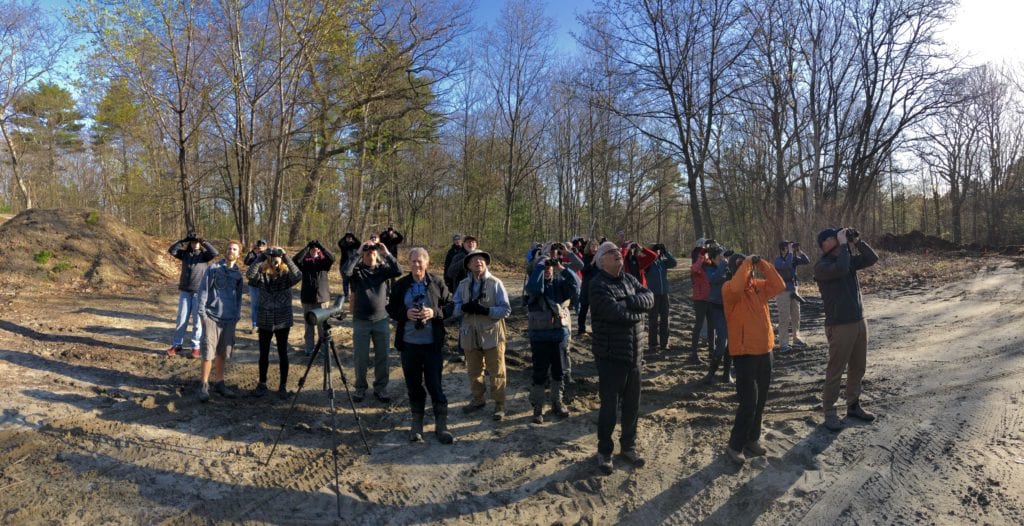
I’ve found myself at Evergreen Cemetery almost daily so it must be May! One of my favorite events of the year, Maine Audubon’s “Warbler Walks” at Evergreen Cemetery and Capisic Pond are a great opportunity to see a large variety of birds in Portland’s green spaces during the peak of spring migration. We offer these walks for two weeks, Monday through Thursday at Evergreen Cemetery and Fridays at Capisic Pond from 7:00-9:00AM, and best of all, they are FREE! Read more below for a summary of our first week.
On the Saturday after these walks end, Maine Audubon holds its annual “Bird-a-thon” fundraiser where teams of birders spend the day celebrating the diversity of Maine’s birds by trying to see as many species as possible. Money raised from this event helps fund the free programs, like the Warbler Walks, that Maine Audubon offers throughout the year. These are important in helping us spread our mission of protecting Maine’s wildlife and habitats to a diverse audience by removing barriers and making them more inclusive to locals where these programs are offered. Please consider donating to a Bird-a-thon team to support this programming.
https://www.crowdrise.com/o/en/campaign/2019-maine-audubon-birdathon
There is still time to form your own team! Why not see how many species you can find in your home county? Or start a “green team” and count birds by foot or bike! Will this be the year that Linda Woodard’s team, the Mighty Marsh Muckers, takes back the crown for top species count?! My team, the Wicked Pishers, are really hoping this will be the year we crack 150 species!
Day 2 of @MaineAudubon‘s Warbler Walks was phenomenal! @DrBirdCast predicted a big flight and we were treated to 53 species around @CityPortland‘s Evergreen Cemetery, including 14 warbler spp. pic.twitter.com/bNPwTxfIlJ
– Doug Hitchcox (@dhitchcox) May 7, 2019
Warbler Walks Week 1 Summary
During the first week of our Warbler Walks, we saw a wide variety of weather and how it impacted the species we saw. There was a big push of migrants overnight leading to our highest count of 53 species (including 14 warbler species) on Tuesday. Thursday morning we saw a drop in activity because our starting temp was a brisk 41ºF. And Friday’s drizzle didn’t help but we still managed to find 46 species at Capisic Pond. Inserted below is the eBird list summary for last week. Join me again this week for the fun at Evergreen and Capisic.
|
|||||||||||
|
||||||||||||||||||||||||||||||||||||||||
|
||||||||||||||||||||||||||||||||||||||||||||||||||||||||||||||||||||||||||||||||||||||||||||||||||||||||||||||||||||||||||||||||||||||||||||||||||||||||||||||||||||||||||||||||||||||||||||||||||||||||||||||||||||||||||||||||||||||||||||||||||||||||||||||||||||||||||||||||||||||||||||||||||||||||||||||||||||||||||||||||||||||||||||||||||||||||||||||||||||||||||||||||||||||||||||||||||||||||||||||||||||||||||||||||||||||||||||||||||||||||||||||||||||||||||||||||||||||||||||||||||||||||||||||||||||||||||||||||||||||||||||||||||||||||||||||||||||||||||||||||||||||||||||||||||||||||||||||||||||||||||||||||||||||||||||||||||||||||||||||||||||||||||||||||||||||||
